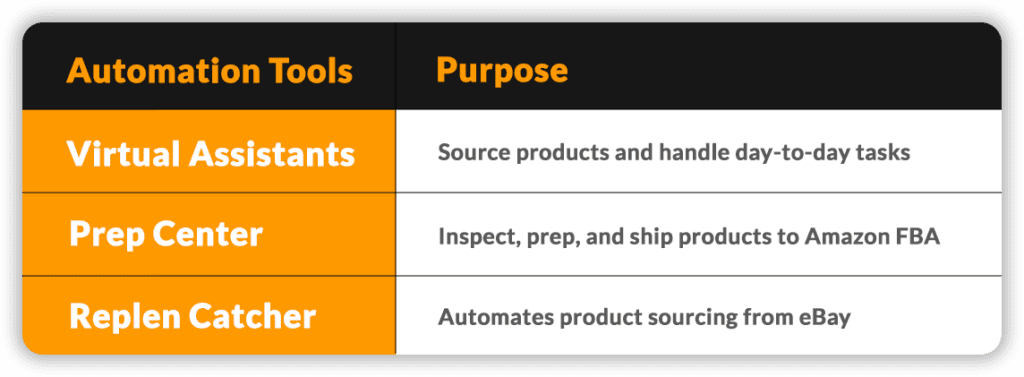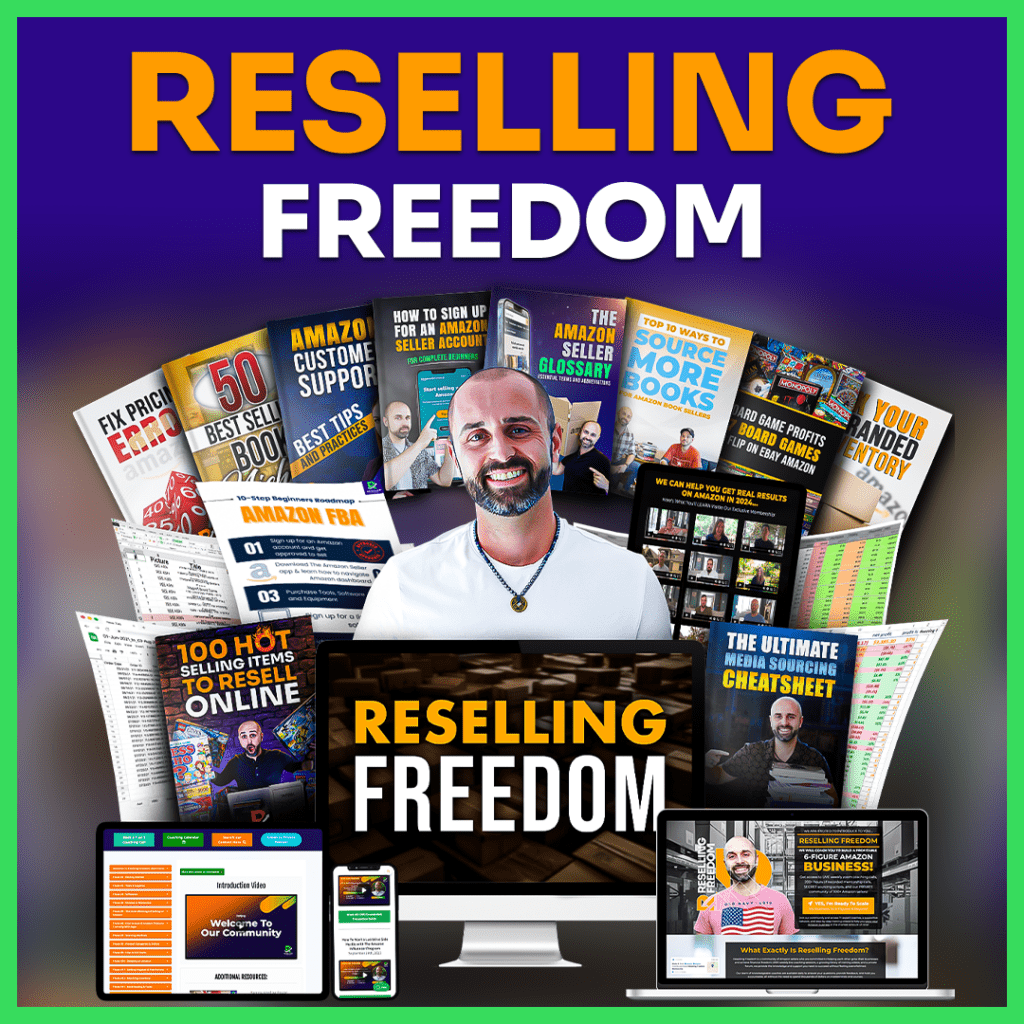
Selling on Amazon has changed the lives of many entrepreneurs, offering a pathway to financial freedom and flexible living.
But let’s be honest, the marketplace can feel overwhelming, especially with so many strategies out there.
Whether it's private labeling, wholesale, or thrifting, it's easy to feel lost about where to start.
In this blog post, I’m going to share the exact strategy I’ve used to generate over $10,000 a month in profit.
This isn’t just a one-off success story either—I’ve sold over $700,000 in products over the last year, pocketing $180,000 in profit.
The best part? I spend less than two hours a week managing this business.
How is this possible? Through a simple, scalable method I call E2A (eBay to Amazon), which involves buying products on eBay and flipping them on Amazon FBA for a profit.
In this post, I’m going to break down every step of the process, share the tools I use, and give you actionable advice on how to get started, whether you’re a beginner or looking to take your Amazon business to the next level.
What is Amazon FBA?

Before diving into the specifics of the E2A method, let’s make sure we’re on the same page about Amazon FBA.
FBA stands for “Fulfillment by Amazon.”
When you use FBA, you send your products to Amazon’s fulfillment centers, and they handle all the logistics for you—storage, packaging, shipping, and even customer service.
Here’s how it works:
1.You send your products to Amazon: Once you source your items, you send them to Amazon’s warehouses.
2. Amazon stores and lists the products: Your items are stored in Amazon’s fulfillment centers and listed for sale on Amazon.com.
3. Amazon ships to customers: When a customer orders your product, Amazon employees pick, pack, and ship the product on your behalf.
4. Amazon handles customer service and returns: Amazon’s customer service team handles any issues, including returns and refunds, so you don’t have to.
Sounds simple, right? It is. But the real trick lies in finding profitable products to sell on Amazon. And that’s where the E2A method comes in.
Why Thrifting and Garage Sales Aren’t Sustainable for Scaling
Most people getting started with Amazon FBA turn to thrift stores, garage sales, and flea markets to source products.
While this is a great way to start, it’s not scalable long-term for a few key reasons:
Time-Consuming: You have to physically be at the thrift stores, garage sales, or flea markets. This means spending hours driving around, scouting locations, and hunting for deals.
Limited Inventory: You’re at the mercy of what’s available locally, which can be highly unpredictable. One day you might find a goldmine of items, but the next, you could come up empty-handed.
Fierce Competition: Everyone knows about thrift stores and garage sales as a sourcing method, so you’re often competing with other sellers who are on the lookout for the same deals.
These methods can be a good starting point for beginners, but they’re not sustainable if you’re looking to scale your business. This is where the E2A method offers a solution.
Introducing the E2A Method: How to Flip eBay Finds on Amazon
The E2A method involves buying products on eBay and flipping them for a profit on Amazon.
Why eBay? It’s a marketplace filled with products being sold below their true value.
There’s a massive inventory of items, many of which are discontinued, rare, or simply overlooked by other sellers.
Here’s why eBay is a goldmine for Amazon sellers:
Unlimited Inventory: Unlike a thrift store or garage sale, eBay gives you access to millions of products from all over the world, 24/7.
Lower Competition: Most Amazon sellers aren’t looking at eBay as a primary sourcing channel, which means there’s less competition.
Flexibility: You can source products anytime, from anywhere. Whether you’re working full-time or looking for a side hustle, the E2A method can fit into your schedule.
Now that you understand the potential, let’s break down exactly how I make this method work.
How I Source Products Using the E2A Method
When I first started with the E2A method, I manually searched for items on eBay that I could flip on Amazon.
This involved using the Amazon Seller app to scan items on eBay and check their profitability on Amazon.
While this method worked, it was incredibly time-consuming.
Today, I use software tools to make the process much faster and more efficient.
Here are the tools I rely on:
1.FlipMine: This software scans eBay listings and matches them to Amazon products, showing you potential items to flip. However, because this tool is widely used, competition for deals can be fierce.
2. Replen Catcher: This is a software tool I developed to streamline the sourcing process. You upload a list of Amazon ASINs (Amazon Standard Identification Numbers), and Replen Catcher searches eBay for matching products. The software updates listings every 30 minutes, giving you fresh opportunities throughout the day.

With these tools, I’m able to source profitable products without spending hours digging through listings. Instead, I can focus on high-value opportunities and let the software handle the rest.
What Types of Products Should You Flip?
One of the most common questions I get is: “What products should I be looking for?” The truth is, I flip almost anything.
But if you’re just starting out, I recommend focusing on these categories:
1.Books: One of the best categories for beginners because there’s usually no need to get ungated, and books hold their value well.
2. DVDs: Easy to get ungated and can have high resale value, especially for rare or out-of-print titles.
3. Board Games and Toys: Popular during the holidays and easy to source on eBay for a decent profit.
4. Office Supplies and Electronics: These have higher upfront costs but can offer better profit margins and quicker sales.

If you’re just starting, I recommend sticking to books and DVDs because they are easier to sell, have a lower upfront investment, and don’t require complicated ungating processes.
Building a Replenishable Product List: Your Secret to Success
The key to scaling the E2A method is building a list of replenishable products—items that you can sell over and over again.
Once you’ve successfully flipped an item, you know it’s profitable, and you’ve already done the research.
The next step is to keep sourcing that same item whenever it becomes available.
Here’s how you build a replenishable list:
1.Track Your Sales: Every time you sell an item, track it. Note how long it took to sell, whether there was any price competition, and how much profit you made.
2. Add to Replen Catcher: Once you know an item is profitable, add it to your Replen Catcher list. The software will continuously scan for this item on eBay and alert you when it becomes available.
3. Rebuy and Resell: Whenever Replen Catcher finds the item at a price that meets your profit margin, buy it and flip it again. Over time, you’ll build a robust list of replenishable products that generate consistent income.
What ROI and Profit Margins Should You Aim For?
One of the biggest advantages of flipping items from eBay to Amazon is the profit margins.
I typically aim for a 40-50% return on investment (ROI), meaning I won’t buy an item unless I can make at least $10 in profit.
However, the beauty of this method is that you can often achieve much higher margins, especially with niche or discontinued items.
Let’s break it down with a simple example:
- Initial Purchase Cost: $50
- Selling Price on Amazon: $100
- Amazon Fees (including FBA fees): $30
- Net Profit: $20
In this case, you’d be earning a 40% ROI on your investment.
Some sellers, like my friend Kevin, won’t touch a product unless they can make a 60-70% margin.
It really depends on your goals and how much capital you have to invest, but I recommend aiming for at least a 40% margin to make the process worth your time.

Automating Your E2A Business for Semi-Passive Income
One of the most exciting aspects of the E2A method is that you can automate a significant portion of the business once you’ve built a solid foundation.
Here’s how I run my business in less than two hours a week:
1. Virtual Assistants (VAs): I have a team of VAs from the Philippines who handle sourcing for me using Replen Catcher. They’re trained to look for items that match my profit criteria, so they do the heavy lifting of finding deals.
2. Third-Party Prep Centers: I use a prep center in Ohio to handle all my incoming products. When my VAs buy items on eBay, they’re shipped directly to the prep center. The prep center handles everything—from inspecting the items to prepping and shipping them to Amazon.
3. Replen Catcher: As I mentioned earlier, this tool automates my sourcing by continuously scanning eBay for profitable products.

By automating these parts of the business, I’m able to focus on strategy and growing the business while spending minimal time on day-to-day operations.
However, I didn’t start here—it took me about 6-12 months to build up to this level.
If you’re just starting, focus on learning the basics before worrying about automation.
Should You Start with the E2A Method?
The E2A method is powerful, but it might not be the best starting point for everyone.
If you’re new to Amazon FBA, I recommend getting your feet wet by sourcing from local thrift stores, garage sales, or flea markets.
Learn how to use tools like Keepa, how to get ungated in restricted categories, and how to ship products to Amazon FBA.
Once you have a basic understanding, transitioning to the E2A method will feel like a natural next step.
You’ll have more sourcing options, greater flexibility, and the ability to scale your business without constantly being on the hunt for local deals.
Conclusion: How E2A Can Change Your Life
The E2A method has completely transformed my business and my life.
It’s allowed me to earn over $10,000 a month in profit while working fewer than two hours a week.
But it didn’t happen overnight. It took time to build systems, hire virtual assistants, and develop the tools I needed to scale.
If you’re serious about selling on Amazon and want a method that offers both flexibility and scalability, the E2A method is for you.
Start small, learn the basics, and as you grow, leverage tools like Replen Catcher and automation to take your business to the next level.
Remember, there’s no such thing as easy money.
But if you put in the effort, this method can give you financial freedom and the ability to work on your own terms.
Have any questions? Feel free to drop a comment below—I’d love to help you on your journey to Amazon FBA success!
Steve w/Raiken Profit









